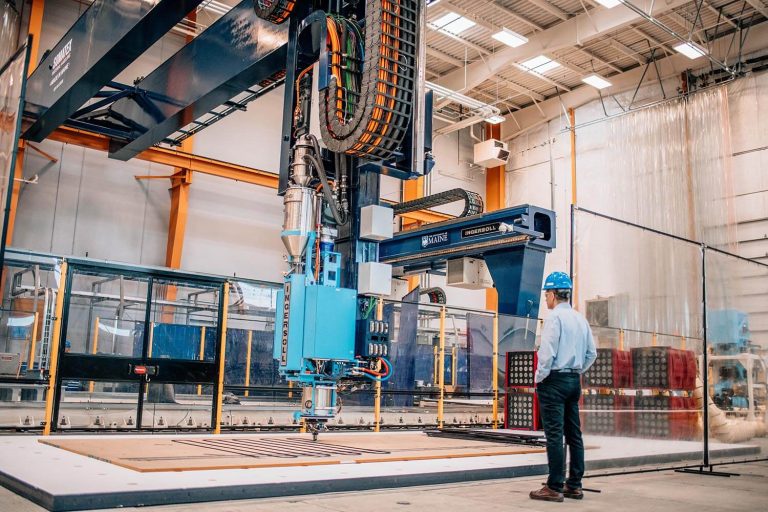Revolutionizing Housing: The World’s Largest 3D Printer at University of Maine
The University of Maine boasts the world’s largest 3D printer, revolutionizing the construction industry by building houses in record time. This colossal machine isn’t limited to creating prototypes; it’s capable of fabricating fully functional homes with remarkable efficiency. Completing a small house in just 80 hours, it outpaces traditional construction methods by a significant margin.
Factory of the Future 1.0: A Game-Changer in Construction Technology
Named Factory of the Future 1.0, this groundbreaking printer is four times larger and faster than its predecessor, with the ability to produce objects up to 96 feet long, 32 feet wide, and 18 feet high, at a rate of 500 pounds of deposition per hour.
This technological breakthrough heralds a future where housing can be manufactured more rapidly and potentially at a reduced cost. The University of Maine’s “Initiative for the Future of Construction” focuses on utilizing sustainable materials like wood byproducts to create these 3D-printed homes.
Their objective is to establish sustainable manufacturing practices and address a critical workforce gap. Their aim is to foster the development of future leaders within a sustainable framework.
Revolutionizing Construction with Unprecedented Efficiency
Already, the university has leveraged its 3D printing capabilities to construct biohomes, with the new printer completing the process nearly four times faster than before. This advancement offers hope for Maine’s housing crisis, requiring less material and fewer workers than traditional methods.
While the current focus lies on small houses, the university harbors grander aspirations. With technology continuously advancing, they envision the printer eventually constructing entire neighborhoods, offering much-needed solutions for affordable housing and sustainable construction.







